Stock rout deepens on tariff shock as bonds rally: Markets wrap
Published in Business News
Repercussions from Donald Trump’s tariff war spread across global markets Thursday, knocking down stocks and spurring a flight into fixed-income havens. U.S. equities and the dollar bore the worst selling on speculation the president’s trade offensive will stunt the American economy.
About $2 trillion was erased from the S&P 500, with the gauge down about 4%. The damage was heaviest in companies whose supply chains are most dependent on overseas manufacturing, including giants Apple Inc., Nike Inc. and Walmart Inc. A Bloomberg gauge of the dollar dropped the most on record. Crypto succumbed to the risk rout. Oil joined a selloff in commodities.
Concern that the steepest increase in American tariffs in a century will hammer economic growth is driving a fierce rally in global bonds, sending the yield on benchmark Treasuries briefly below the closely-watched 4% level. Most other yields also slipped to session lows as money markets priced in a 50% chance of the Federal Reserve delivering four quarter-point rate reductions this year.
Trump has embraced tariffs as a tool to assert U.S. power, revive manufacturing at home and extract geopolitical concessions — counter to the decades-old consensus that lower trade barriers help to foster ties among nations and prevent conflicts. Economists say the near-term result of his measures will likely be higher U.S. prices and slower growth, or perhaps even a recession.
“This was the worst-case scenario for tariffs and were not priced-into the markets,” said Mary Ann Bartels at Sanctuary Wealth. “If these tariffs stick, the economy is going to slow down. Whether it’s a recession or not, it’s clear that the economy is headed for a slowdown in the U.S. and around the world. There’s no place to hide, but the fixed-income markets.”
The S&P 500 sank 4.3%. The Nasdaq 100 slid 4.9%. The Dow Jones Industrial Average lost 3.7%. The Russell 2000 plunged 6.7% and is now down more than 20% from its all-time high reached in late 2021. Wall Street’s chief fear gauge — the Cboe Volatility Index — topped 28, above the 20 level that usually indicates concern among traders.
The yield on 10-year Treasuries fell 12 basis points to 4.01%. The 2.1% tumble in the Bloomberg Dollar Spot Index was the measure’s sharpest intraday decline since its launch in 2005.
Recession fears have been rising and that is visible across various asset classes. Stocks and bond yields are back moving in concert and their correlation is highest in two years. But unlike in 2023 when they were both going up, this time they’re falling, a typical sign that economic growth expectations are being downgraded.
“I have no doubt that over the near term tariffs will be detrimental to growth,” said Irene Tunkel at BCA Research. “We have gone through the first stage of this calamity and, as I said before, this is bad for financial markets. The first stage is peak uncertainty. The next stage will be downgrades in earnings.”
The U.S. risks being caught between slowing growth and rising prices as a result of the sweeping tariff plans unveiled Wednesday by the Trump administration, according to the president of Apollo Global Management Inc.
The chances of a recession in the world’s biggest economy have risen to 50% or higher, Jim Zelter said in a Bloomberg Television interview in New York on Thursday. The risk that tariffs accelerate inflation and constrain the Fed’s ability to stimulate growth by slashing rates has also risen materially, he said.
“We’re left to ponder how far the price action can extend from here. At this stage, the more relevant uncertainty is the degree to which the U.S. equity market will sell off. In the event that stocks continue to slide, we anticipate that Treasury yields will do the same,” said Ian Lyngen and Vail Hartman at BMO Capital Markets.
Trump’s trade war is likely to reinforce the underperformance of U.S. equities, as tariffs crimp earnings for corporate America, according to global strategists at HSBC including Alastair Pinder.
“We believe this could accelerate the ongoing rotation out of U.S. equities and into international,” they noted.
U.S. tariffs were larger than expected, not priced in, and coming at a bad time, increasing the risk that U.S. stocks will enter a bear market, UBS strategists led by Bhanu Baweja said. see downside risk for both earnings and valuations.
The S&P 500 is at risk of staying below 5,500 — a key psychological threshold that, if broken by the close, would leave few levels to lure dip buyers, according to technical analysts, who monitor daily averages and other metrics to determine market momentum. That would retest this year’s intraday lows of 5,504.65 on March 13 and 5488.73 on March 31.
“Market uncertainty is likely to remain elevated in the weeks ahead, as investors consider likely downgrades to consensus U.S. economic and earnings growth forecasts, the risk of a tit-for-tat escalation in tariffs, and the potential scope for tariffs announced to be negotiated down,” said Solita Marcelli at UBS Global Wealth Management. “All of this is likely to mean an extended period of volatility for U.S. equities. Nonetheless, we do believe the market will end the year higher.”
While uncertainty is currently high, Marcelli believes that, at the margin, incremental news flow could become more supportive as we approach the second half of the year.
“Now that the tariffs have been announced, negotiations to soften them can begin,” she said. “Tariff revenue could be used to offset the cost of extending tax cuts. And we would expect the Fed to respond to weakening growth with interest rate cuts.”
Meantime, the dollar’s extended decline in the midst of a global selloff in risk assets has sparked a vigorous debate about whether it has retained its status as a haven during turbulent times, given the homegrown nature of the economic fears roiling macro markets.
Hedge funds have increased their bearish bets on the dollar, mainly versus the yen and the euro, while also bracing for higher volatility into year-end, according to currency traders familiar with the transactions who asked not to be identified because they aren’t authorized to speak publicly.
Some of the main moves in markets:
Stocks
—The S&P 500 fell 4.3% as of 10:54 a.m. New York time
—The Nasdaq 100 fell 4.9%
—The Dow Jones Industrial Average fell 3.7%
—The Stoxx Europe 600 fell 2.7%
—The MSCI World Index fell 3.3%
—Bloomberg Magnificent 7 Total Return Index fell 6.7%
—The Russell 2000 Index fell 6.6%
Currencies
—The Bloomberg Dollar Spot Index fell 2.1%
—The euro rose 2.5% to $1.1123
—The British pound rose 1.3% to $1.3173
—The Japanese yen rose 2.6% to 145.40 per dollar
Cryptocurrencies
—Bitcoin fell 4.8% to $81,516.12
—Ether fell 6.6% to $1,757.71
Bonds
—The yield on 10-year Treasuries declined 12 basis points to 4.01%
—Germany’s 10-year yield declined nine basis points to 2.64%
—Britain’s 10-year yield declined 12 basis points to 4.52%
Commodities
—West Texas Intermediate crude fell 7.8% to $66.15 a barrel
—Spot gold was little changed
(With assistance from Vildana Hajric.)
©2025 Bloomberg L.P. Visit bloomberg.com. Distributed by Tribune Content Agency, LLC.
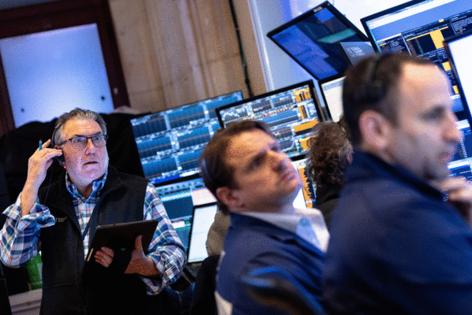




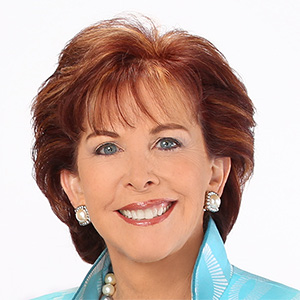


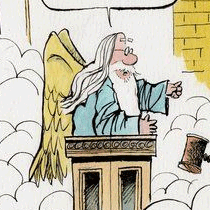
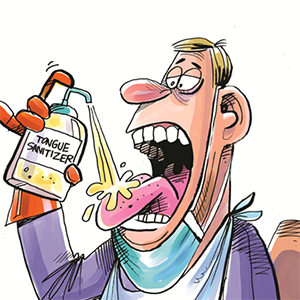
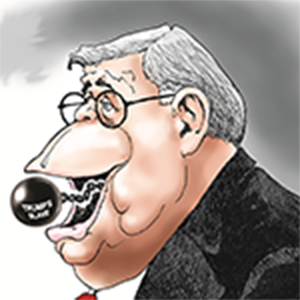

Comments